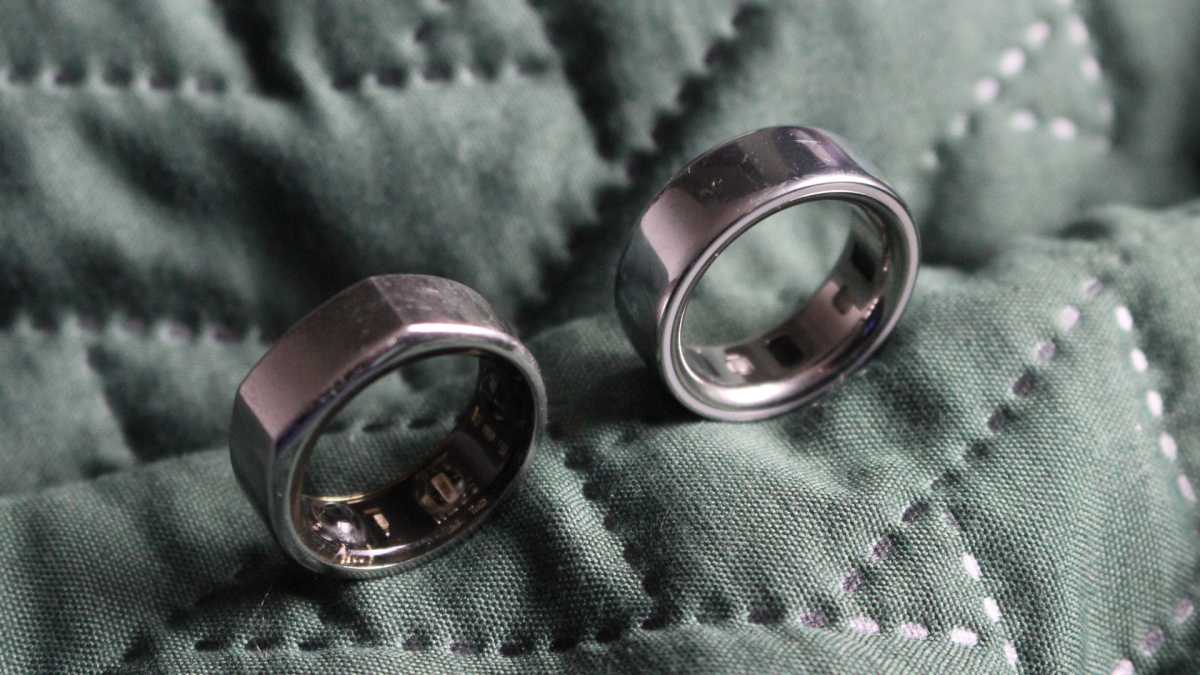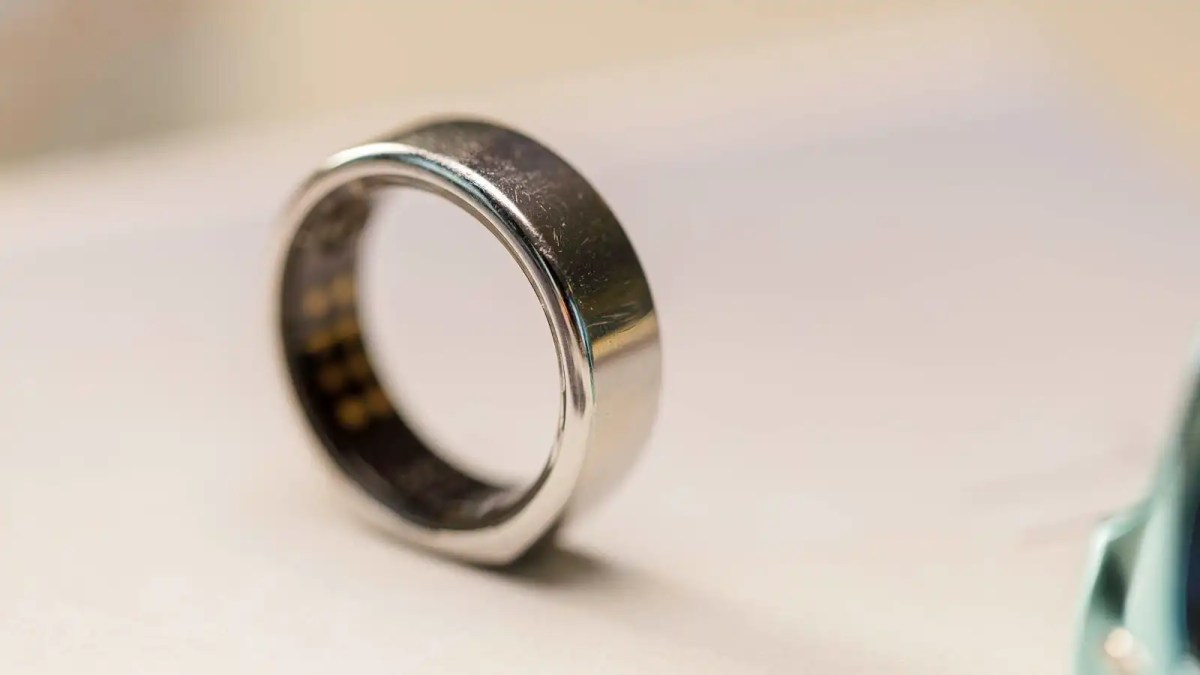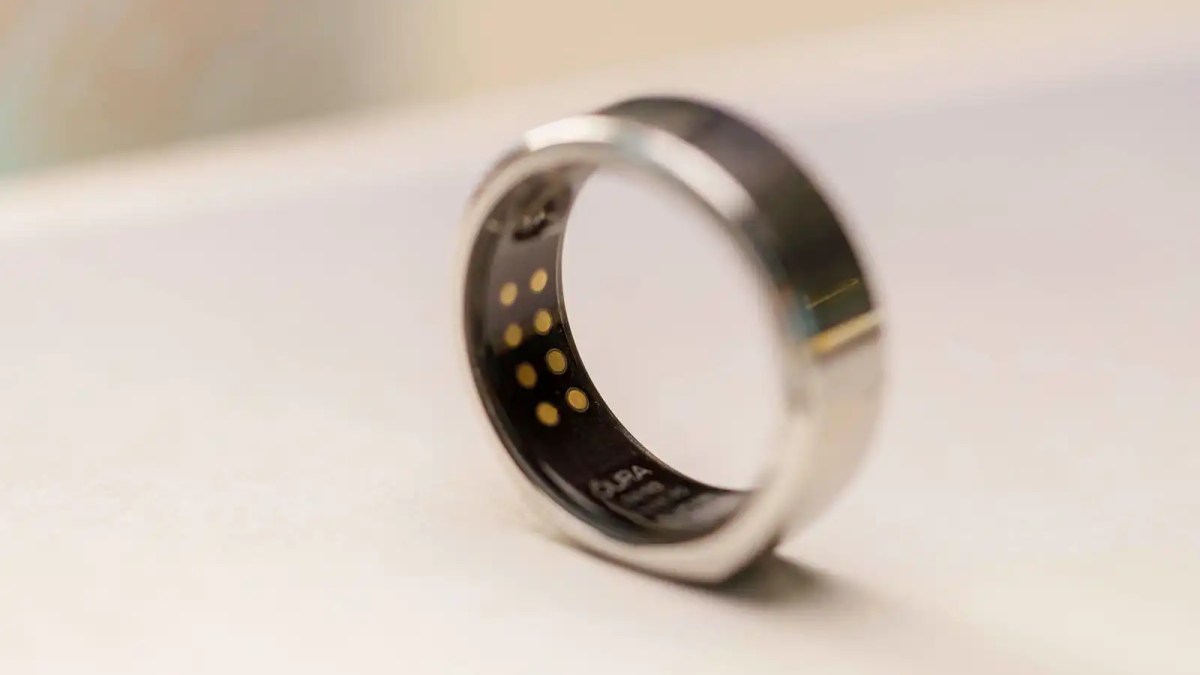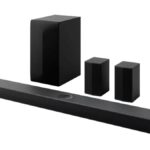While the Oura Ring 4 might be the newest flagship smart ring on the block, you can still pick up the older Oura Ring Gen 3, which offers a lot of the same features at sale prices.
The Ring Gen 3 gets access to some of the latest smarts introduced to Oura users, wrapped up in an attractive design to still make it one of the best smart rings you can buy.
If you’re sizing up buying your first smart ring and have already decided it’s going to be an Oura, we’ve tested both available rings to tell you where the biggest differences and similarities lie to help you decide between the two.
Design & Build
Firstly, these are two of the best-looking smart rings you can put on your finger right now, so you’re well served if you want something visually pleasing to wear. They may not be the thinnest rings available, but both offer a range of colour finishes and size options.
The Oura Ring 4 has more size options, particularly for those with larger fingers.
Mike Sawh
One of the biggest differences is that if you like a fully circular smart ring, then that’s the only option you have with the newer Ring 4 (pictured above). The Gen 3 comes in heritage and horizon designs, with the former offering a mostly round design broken up by a flatter top edge.
Both rings are made predominantly from titanium, with the Ring 4 adding more to the inside of the ring to give it more of an all-metal look. Inside, the sensor array sits more discreetly inside of the Ring 4’s interior and creates a slightly more comfortable and less intrusive fit.

Mike Sawh
You’re getting the same level of protection against water, letting you take them for a dip in water up to 100 metres depth and keep it on in the shower. They charge in a similar manner, too, with the charging cradle bundled with the 4 now offering a higher-grade look.
Specs & Performance
These rings are, of course, screen-less and have similar sensor arrays to track the same core things. Those are sleep, steps, stress, heart rate, temperature and exercise.
You’re also going to get access to new features like Oura’s Symptom Radar, experiments to help you ditch bad habits and will be able to beta test features that Oura is working on through the same companion app.

Dominik Tomaszewski / Foundry
If you want the one to track your sleep and daily activity best, they’re pretty level pegged on that front. Both dish out similar data that fuels Oura’s key Readiness metric.
If you’re looking for the best for tracking metrics like heart rate and stress, the improved sensor platform featured on the Oura Ring 4 does seem to generate in general, more reliable heart rate tracking during the day and sleep. That’s helped by a sensor setup that now compensates for when the ring moves around on your finger.
They still suffer when it comes to tracking heart rate through more high-intensity exercise, with the ability to be connected to Apple Health, Google Health and Strava to pull in workout data from other sources to help fill in the gaps. The automatic exercise recognition support does a pretty good in general across both in picking up when you’ve been for a walk, run or a swim.

Mike Sawh
There is a difference in battery on paper by a day, with the Oura Ring Gen 3 promising up to 7 days and the Ring 4 delivering up to 8 days. Getting there, though, depends on ring size and whether you choose to use power-intensive monitoring like tracking blood oxygen levels.
I’ve found that the Ring 4 does a better job of getting to that maximum number but does still fall slightly short of hitting that maximum, much like the Ring 3. Adding in blood oxygen tracking on both rings does lead to a more severe drop in battery life.
Other key differences
While the width of these rings is identical, there are some differences in thickness and weight. The Oura Ring Gen is slightly thinner at 2.7mm thick with the Ring 4 coming in at 2.8mm.
General weight across ring sizes sees the Oura Ring 4 in general being the lighter, ranging from 3.3-5.2g, compared to 4-6g on the Gen 3. In the grand scheme of things, it’s not the kind of differences in weight and thickness that really alters what it’s like to wear either ring.

Dominik Tomaszewski / Foundry
Price & Availability
The price of the Oura Ring 4 starts at £349/$349 and can go as high as £499/$499. The starting price of Oura Ring 3 meanwhile, comes in cheaper at £199/$199 and can rise to £349/$349 for the most expensive finish option.
You also need to consider the subscription here for both, which can be covered on a monthly or annual basis. A monthly subscription costs £5.99/$5.99 and an annual one sits at £69.99/$69.99.
You can buy either from Oura or retailers like Amazon UK and Amazon US.
So, neither ring is going to be cheap in the long run, though you can pick up the Oura Ring Gen 3 hardware for roughly $150/£150 less than the 4 when comparing the cheapest available models for both.
Check out our list of the best smart rings for more options.
Verdict
Despite the Oura Ring Gen 3 being the older smart ring, it still has a lot to offer. It’s offers a great look as well as two designs and offers particularly good performance for monitoring sleep and general activity.
It can offer some of the new insights also on offer on the Oura Ring 4 for less money (while it’s still available).
The Oura Ring 4 does offer a step up in some key areas, most notably battery performance and monitoring metrics like heart rate. If you want a more affordable route to getting an Oura Ring, it’s worth taking a look at the Oura Ring Gen 3.
If you want the best, we’d say go for the Oura Ring 4.
Read the full article here












